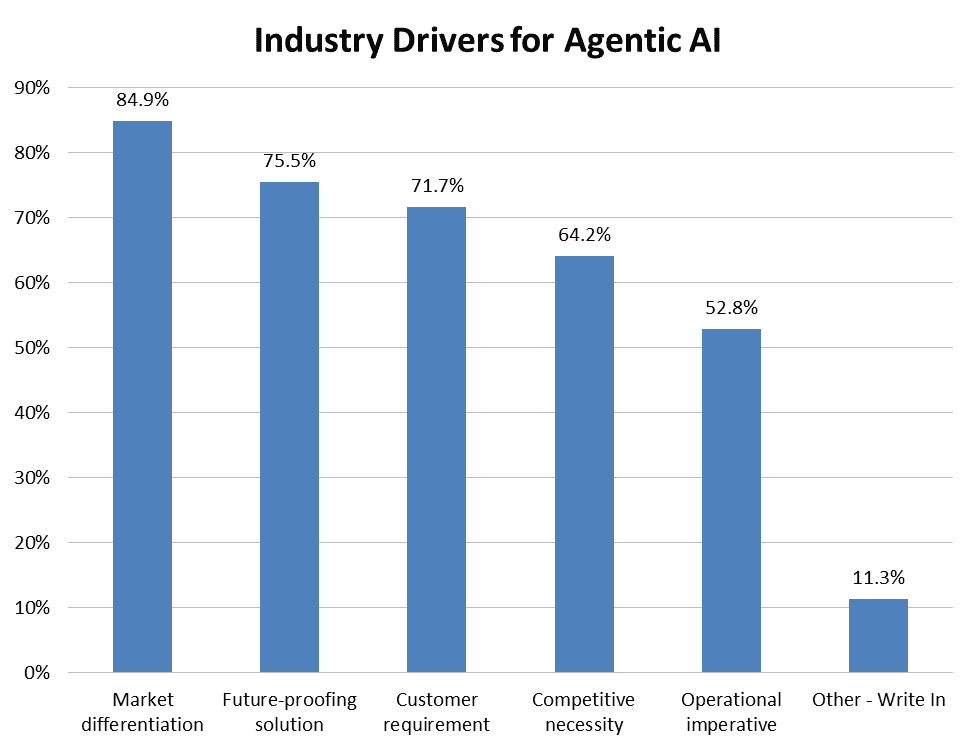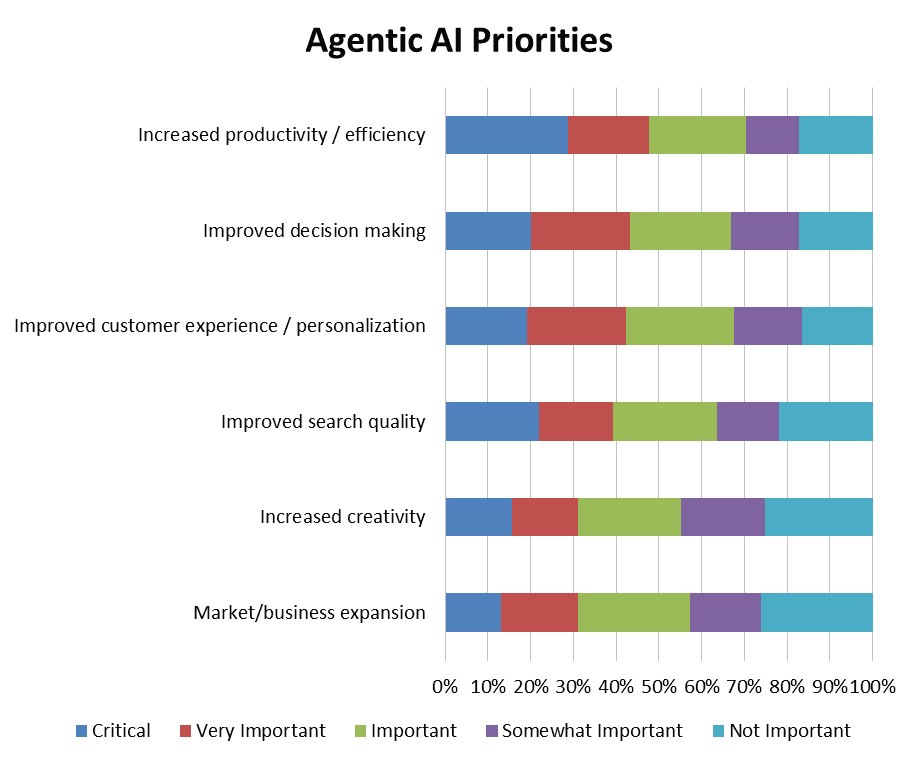Several years ago, I heard the CTO of PeopleSoft share the story of how his company began. PeopleSoft was founded during the era of client-server computing, when human resources software was dominated by much larger companies that ran exclusively on mainframes. At the time, PeopleSoft expected those incumbents to quickly respond to the new model. Instead, within just a few years, many of those once-dominant vendors had disappeared.
Ironically, history nearly repeated itself. Years later, PeopleSoft found that the rise of the internet once again reshaped enterprise applications, forcing software companies to rethink their architectures and delivery models. And after Oracle acquired PeopleSoft, the shift to the cloud again rewrote the rules of the game. Each tech shift created winners and losers, depending on who seized the inflection point fast enough.
Agentic AI Is the Next Turning Point
The enterprise software industry is standing at another such turning point. This time, the disruptive force is agentic AI. Workday — widely viewed as the successor to PeopleSoft — has made it clear in its recent announcements that ERP systems are no longer confined to being passive “systems of record.” According to Workday’s CTO, the future lies in making them “systems of action.” The difference is profound. Instead of bolting AI onto existing workflows, the opportunity lies in weaving agentic AI into the heart of business processes, enabling systems to not only report and recommend but also to take action.
Workday is not alone in seizing upon this shift. Across the software industry, leaders see agentic AI as a generational change on par with client-server, the Internet, and the cloud. The question is no longer whether agentic AI will redefine enterprise software, but how quickly organizations will adapt — and which companies will seize competitive advantage.
Why Vendors Are Prioritizing Agentic AI
A striking 68.5% of software vendors are already supporting agentic AI — and most of the rest plan to follow within the next 12 months, according to the “Agentic AI Report 2025” from Dresner Advisory Services. This overwhelming alignment signals more than a trend; it marks an industrywide inflection point.
As Rita McGrath explains in “Seeing Around Corners,” an inflection point is “a change in the business environment that dramatically shifts some element of a company’s activities, throwing certain taken-for-granted assumptions into question.”
That’s exactly what we’re witnessing today. Vendors are rethinking their architectures, product road maps, and customer commitments in response to the rapidly shifting technology landscape. For business leaders, this isn’t just a signal — it’s a call to act.
Key Drivers Behind Vendor Adoption
When asked why they are prioritizing agentic AI capabilities, vendors revealed a clear hierarchy of motivations, as outlined in the Dresner report. Two-thirds cited market differentiation, future-proofing, customer demand, and competitive necessity as their top drivers. In other words, agentic AI is not viewed as an optional innovation but as a baseline requirement to remain competitive and relevant in the market.
At the same time, a majority of vendors pointed to operational imperatives. This reflects a sober recognition that internal systems and services must evolve as quickly as customer expectations. In effect, agentic AI is forcing companies to rethink not only what they build for customers but also how they operate themselves.

(Source: Dresner Advisory Services)
The above research surfaced six core features that repeatedly emerged as critical to enabling enterprise-scale AI initiatives:
-
Data integration or virtualization.
-
Integration with foundational models.
-
Predictive and proactive systems.
Each capability plays a distinct role in designing and executing intelligent, agentic workflows and decision-making systems. These findings underscore a broader reality: Platform modernization is no longer a one-dimensional technical upgrade. Instead, it has become a multifaceted strategic response, balancing the need for near-term competitiveness with long-term resilience and operational necessity.
BI Maturity a Determinant in Agentic AI Adoption
Despite all the hype around agentic AI, adoption remains limited. Only 10.5% of organizations are actively experimenting or deploying, with another 27% preparing to follow. Even fewer — just 6.5% — report putting agentic AI into production. These numbers may not even capture embedded solutions, underscoring how early we still are in the adoption curve.
A closer look reveals a clear divide. Organizations that struggle with business intelligence (BI) are the least likely to be active proponents or early adopters of AI. In contrast, those that have achieved BI success are far better positioned to use AI: Among organizations with mature BI capabilities, 13.6% are already implementing agentic AI, while another 37% are excited early adopters. The lesson is straightforward: Success in BI — essentially the industrialization of data — is a prerequisite for innovation.
As Thomas Davenport and Nitin Mittal argue in “All In on AI,” every serious AI initiative requires structuring and rearchitecting data, consolidating it on a common platform, and addressing fundamental issues like quality, duplication, and silos. The organizations that have done this work are now reaping the benefits, moving quickly to capitalize on AI-driven opportunities while their peers remain stuck in data chaos.
Other factors also shape readiness: the presence of strong data leadership, prior experience with analytic AI such as machine learning, and adoption of self-service BI. Among organizations already leveraging data science, nearly a quarter are actively implementing agentic AI, and another 37% are preparing to adopt. The pattern is unmistakable — organizations that treat data as a strategic asset are racing ahead with agentic AI.
As Nate Nichols, head of generative AI and vice president of product management at Salesforce Tableau, explained to me in a recent interview, one of the biggest barriers is tribal knowledge. Historically, critical context about data — what requests meant, which sources were reliable, how terms were defined — existed only in analysts’ heads. In an AI-powered world, this becomes a bottleneck. To scale the use of agentic AI systems capable of autonomous problem-solving, organizations must externalize and structure that knowledge. As Nichols said, “only with this foundation can AI be used to reliably answer business questions.”
Where Enterprises See the Biggest Opportunities
Where do organizations see the greatest opportunities for agentic AI? The answer is: everywhere. Survey results show that business leaders view agentic AI as equally relevant to productivity gains, better decision-making, and enhanced customer experiences.
When asked to rank potential benefits, improving customer experience and personalization emerge as the top priority, followed closely by sharper decision-making and increased efficiency.
What’s telling is what landed at the bottom of the list. Few organizations currently view market and business expansion as critical. This suggests that, at least in the near term, agentic AI will be applied less as a driver of bold new growth and more as a catalyst for improving and extending existing operations. In other words, companies see the first wave of value not in reinvention, but in elevating what they already do.

(Source: Dresner Advisory Services)
Parting Thoughts
Agentic AI is not simply the next technology wave — it is the next great inflection point for enterprise software. Just as client–server, the Internet, and the cloud radically redefined industry leaders, agentic AI will determine which vendors and enterprises can adapt quickly enough to thrive. The lesson is clear: organizations that treat data as a strategic asset, modernize their platforms, and embed intelligence into their workflows will not only move faster but also serve customers better. The rest risk being left behind — just as the mainframe giants once were.


